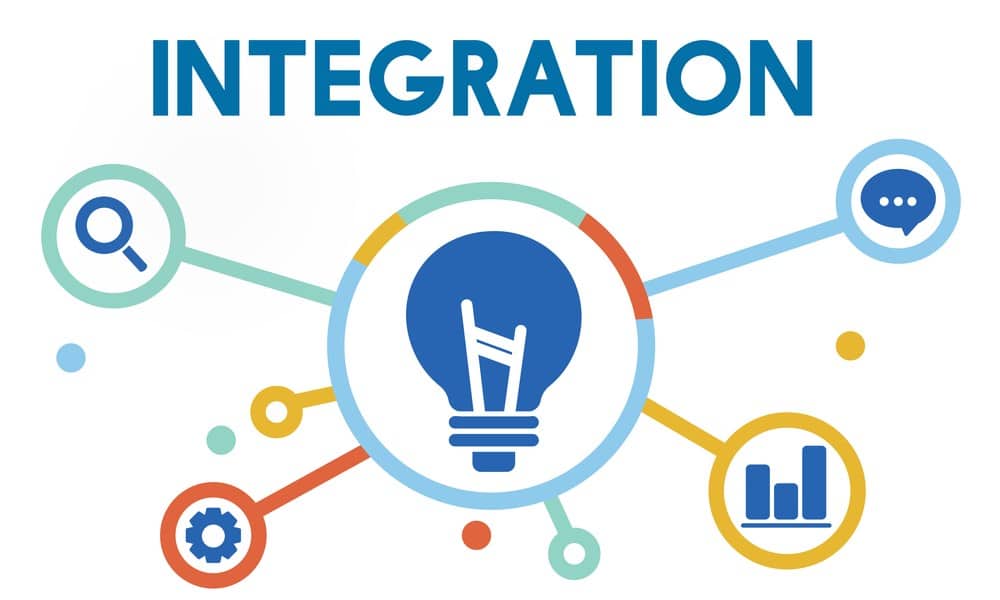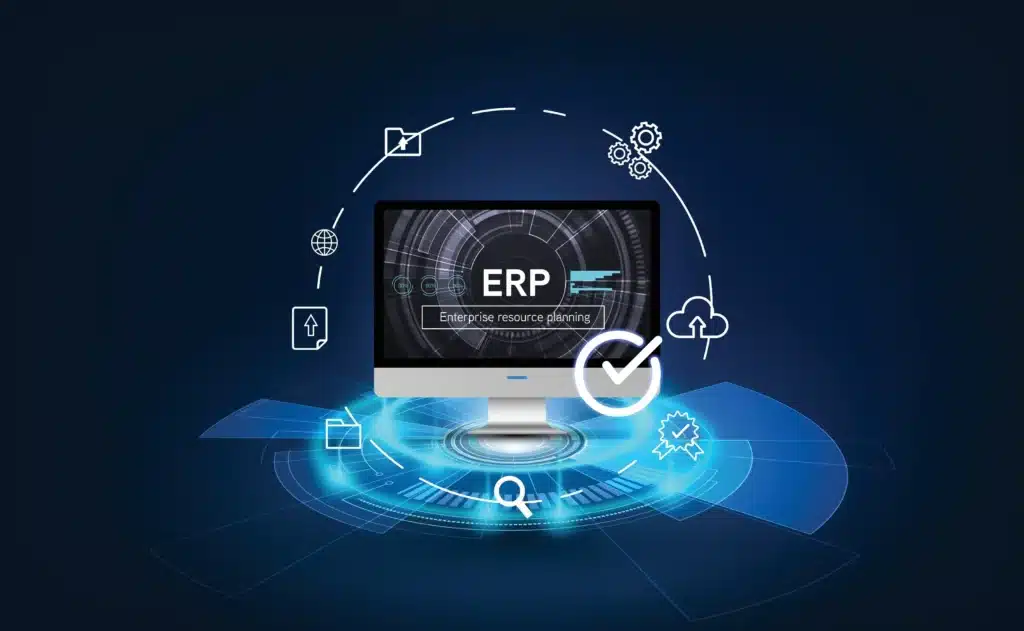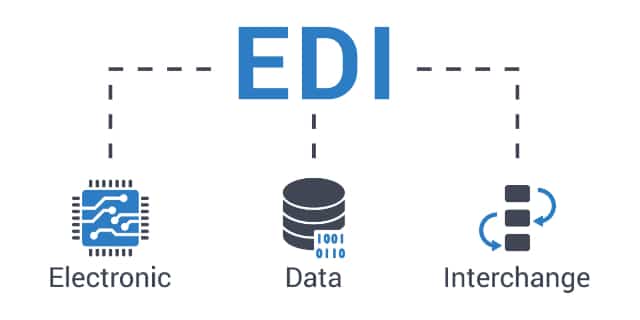Integrating the right Warehouse Management System (WMS) can transform how businesses manage their inventory, orders, and shipping. WMS Integration ensures smoother operations, better data flow, and fewer manual errors. At Leanafy WMS, the focus is on customizable integration types tailored to your needs, helping you stay competitive and efficient. From EDI to advanced ERP connections, these integrations aren’t just optional—they’re essential for businesses looking to scale without extra complexity. Ready to optimize your warehouse operations? Dive into how Leanafy WMS makes it simple to keep pace with today’s demands. For more insights, explore our EDI and Warehouse Management Systems for a deeper understanding of integration benefits.
What is WMS Integration?
Warehouse management systems (WMS) are pivotal to running efficient, scalable warehouse operations. But what truly amplifies their impact? Integration. WMS Integration refers to connecting your warehouse management software with other critical systems to streamline processes, minimize manual work, and boost efficiency. Whether it’s syncing with your ERP for financial tracking or a CRM to better understand customer trends, WMS integration is the glue that holds modern warehouse operations together.
The Role of Warehouse Management Systems
A WMS serves as the foundation of any successful warehouse operation. Think of it as the traffic control system for your warehouse, ensuring that inventory flows smoothly, orders are processed efficiently, and shipping deadlines are met. Without WMS, even straightforward tasks can quickly become chaotic. When aligned with business needs, WMS turns disorganized storage units into seamlessly coordinated hubs of activity.
At Leanafy, Warehouse Management Systems aren’t just software—they’re strategic tools. They help businesses like yours coordinate every layer of the supply chain. Curious how it works? Our guide, What is a WMS and Why Do You Need One?, explains how systems like these transform day-to-day warehouse tasks into data-driven operations that work smarter, not harder.
Understanding the Importance of System Integration
WMS is powerful on its own, but integrating it? That’s where operational excellence begins. Here’s why system integration matters:
- Smarter Decisions from Unified Data: Connecting ERP systems with your WMS consolidates financial tracking and inventory management. This “single source of truth” guides better, faster decisions based on real-time data.
- Improved Customer Relations: Integrating WMS with CRM systems ensures that order accuracy, shipment timing, and customer satisfaction are always at their peak. Happy customers mean repeat customers.
- Enhanced Error Reduction: Manual data entry is slow and error-prone. Integration eliminates the need for redundant tasks, reducing errors and saving your team time.
WMS integration aligns with today’s push for digital transformation. It eliminates silos in operations, delivering a connected, cohesive supply chain experience. By connecting systems like ERP, CRM, and e-commerce platforms, warehouses are no longer just physical spaces—they become intelligent ecosystems.
WMS integration is not a one-size-fits-all solution. At Leanafy, we focus on integrations tailored to fit your goals, whether you’re scaling your e-commerce operations or managing logistics for multiple clients.
Type 1: Enterprise Resource Planning (ERP) Integration
Integrating your Warehouse Management System (WMS) with an Enterprise Resource Planning (ERP) system creates a smooth flow of information between your business processes. Think of ERP-WMS integration as connecting the “brain” (ERP) with the “hands” (WMS) of your operations. This synergy ensures that every action in your warehouse is informed by accurate, real-time data from other areas of your business, like finance, procurement, and manufacturing. Let’s explore its key advantages.
Synchronized Data Management
Syncing your ERP with a WMS means your data is always consistent across platforms. Ever get frustrated by mismatched numbers between inventory levels and purchase orders? ERP-WMS integration eliminates that challenge by keeping everything aligned in real time.
- Fewer Errors: Human errors from manual data entry are nearly erased, as data only needs to be entered once.
- Real-time Visibility: Changes in inventory, orders, or financials are instantly reflected across platforms, improving your ability to react to demand and supply shifts.
- Better Insights: Analytics become significantly more powerful when both your ERP and WMS are feeding from the same well of accurate data.
This integration lays the foundation for smarter decisions, faster responses, and fewer disruptions. For businesses that rely heavily on seamless operations, systems like Epicor ERP paired with a WMS are game-changers. Check out how Leanafy integrates ERP systems like Epicor to make this a reality.
Optimized Resource Utilization
Combining ERP and WMS doesn’t just streamline data—it optimizes resource allocation. With ERP systems managing the big-picture strategy and WMS handling granular details, the two work together to maximize efficiency.
- Smarter Scheduling: Labor, equipment, and stock are allocated based on both warehouse needs and broader business forecasts.
- Reduced Waste: Misallocations of time or materials are minimized, which translates into lower costs and higher profit margins.
- Operational Efficiency: Inventory is managed more precisely, ensuring you always have the right amount of stock without tying up capital in excess goods.
For example, an Acumatica ERP integration with a WMS can allow small-to-midsize businesses to enjoy the same resource efficiencies as larger companies. Learn more about Acumatica’s ERP-WMS integration benefits.
ERP-WMS integration transforms warehouses into highly efficient hubs of activity where every resource—from human to capital—is used wisely. If you’re considering implementing such systems, check out this WMS implementation guide to learn the benefits of getting it right the first time.
Type 2: EDI (Electronic Data Interchange) Integration
Electronic Data Interchange (EDI) is a transformative tool for businesses aiming to streamline supply chain operations. By automating the exchange of critical documents like purchase orders, invoices, and shipment details, EDI eliminates the inefficiencies of manual data entry. With Leanafy WMS, integrating EDI into your system isn’t just a step forward—it’s a leap toward achieving seamless efficiency. Curious to know more? Check out the in-depth breakdown of EDI and Warehouse Management Systems to see how this integration works.
Streamlining Supply Chain Communication
Communication across the supply chain is rarely straightforward, especially when dealing with multiple partners, vendors, and clients. Mistakes are bound to happen when humans manually process purchase orders or invoices. This is where EDI integration with WMS steps in to bridge gaps and ensure smooth coordination.
Here’s how EDI enhances communication within the supply chain:
- Direct Data Sharing: EDI automates the transmission of information, ensuring that key details—such as inventory levels and delivery schedules—are shared in real time.
- Standardization: With predefined document formats, everyone in your supply chain remains on the same page, avoiding confusion over data inconsistencies.
- Manual Intervention Reduction: When you cut out the need for repetitive data processing, you not only save time but also reduce errors.
The result? Your team spends less time chasing down errors and more time focusing on strategic priorities, enabling other parts of your operation to run smoothly. Want to know more about how EDI simplifies integrations? Explore these EDI Capabilities for Warehouse Operations offered by Leanafy.
Benefits of Automation and Speed
Time in the warehouse world often equals money. EDI’s ability to accelerate day-to-day operations is a game-changer for many businesses. Think about how quickly invoices can be processed when they’re sent digitally at the moment an order is fulfilled.
Some benefits of EDI automation include:
- Quicker Turnaround Times: Immediate data exchange shrinks delays caused by physical document handling and manual entry.
- Reduced Errors: With automated systems doing the heavy lifting, common mistakes like typos or data omissions essentially disappear.
- Faster Decision Making: Real-time data means your team can act on insights faster, such as restocking high-demand items or rerouting shipments smartly.
This not only improves operational efficiency but also positively impacts customer satisfaction by delivering consistent reliability. For businesses navigating complex supply chains, solutions like Macola Software’s Integration with Leanafy illustrate how EDI can minimize manual workload and improve processing speeds.
Combining Leanafy WMS with EDI is an investment that simplifies workflows and pays for itself in faster, error-free operations.
Type 3: CRM (Customer Relationship Management) Integration
Integrating a Warehouse Management System (WMS) with a Customer Relationship Management (CRM) platform is essential for businesses seeking to enhance service levels and streamline operations. By bridging the gap between customer data and warehouse workflows, this integration ensures your operations stay aligned with customer expectations. Whether you’re using tools like Salesforce or other CRM platforms, the right integration empowers you to improve both efficiency and customer satisfaction.
Enhanced Customer Experience
When your CRM syncs with your WMS, it transforms how you interact with customers. Why? Because real-time updates build trust. For example, your warehouse staff knows exactly when an order was placed, its current status, and the estimated delivery time. Imagine telling a customer their package is on the truck instead of saying, “let me check and get back to you.” That’s the power of a unified platform.
- Customer Insights at Your Fingertips: Having access to real-time inventory updates ensures you can confidently offer accurate information on stock availability.
- Proactive Communication: Notify customers immediately about any delays or unexpected changes right from the CRM dashboard.
- Boosted Satisfaction: When customers feel informed and valued, they are more likely to return and recommend your business.
Want to see how WMS can streamline operations to enhance customer satisfaction? Learn more about how Leanafy optimizes customer experiences.
Streamlined Order Fulfillment
Order fulfillment can make or break your warehouse operations. By connecting your WMS to a CRM like Salesforce, you remove common bottlenecks and ensure your warehouse runs like clockwork. Say goodbye to fragmented systems and hello to better efficiency.
- Automated Data Syncing: Orders received through the CRM automatically update in the WMS, reducing errors and manual data entry.
- Accurate Picking and Packing: With synced data, warehouse staff can quickly locate items, ensuring that orders are processed without delays.
- Reduced Return Rates: With accurate information on items and delivery expectations, the chances of incorrect shipments decrease significantly.
This integration is especially valuable for 3PLs and businesses managing complex customer needs. Read more on why 3PLs need a comprehensive WMS like Leanafy to stay competitive in 2025.
Integrating CRM with your WMS doesn’t just improve internal workflows—it directly impacts how customers perceive your business. When systems work together seamlessly, you not only save time but also build lasting customer loyalty.
Type 4: API (Application Programming Interface) Integration
API Integration is the backbone of connectivity in modern systems. When it comes to WMS Integration, APIs serve as the conduit for seamless interaction between your warehouse management system and other business applications. They provide the flexibility and scalability to adapt to evolving business needs without breaking a sweat. Here’s how.
Seamless Data Exchange
APIs excel at enabling smooth and reliable data transfer between systems. Whether you need your WMS to talk to an e-commerce store or an ERP, APIs make it effortless. Imagine having all your systems working as a well-synchronized team, where information flows smoothly without barriers. It’s like shifting gears in a car without grinding—a necessity, not just a luxury.
With API Integration, you can:
- Automatically share inventory updates with your sales platforms.
- Sync order statuses between your WMS and e-commerce applications.
- Reduce manual errors by automating data input across various systems.
This means no manual back-and-forth, fewer hiccups, and faster operations overall. Curious about how API connections can enhance your workflows? Check out why seamless integrations matter in warehouse settings.
Scalable and Flexible Integration
One of the biggest advantages of API Integration is its scalability. As your business grows or pivots, your WMS needs to evolve alongside it. APIs empower you to integrate with new systems or modify the way your current systems work without overhauling your entire setup. Think of it as adding new pieces to a puzzle without needing to redo the entire design.
Here’s how flexible API Integration benefits your business:
- Adapts to Growth: Add new marketplaces or systems without major disruptions.
- Customizable for Specific Needs: Adapt workflows to align with unique business processes.
- Future-Proof: Easily integrate emerging technologies or platforms as they become relevant.
For example, integrating with platforms like Walmart or Shoplazza via APIs ensures your WMS remains responsive to market demands. Learn more about connecting Leanafy WMS with platforms like Shoplazza or Walmart to support your operations effectively.
By combining seamless data exchange with adaptability, API Integration allows businesses to stay ahead in a competitive market. Whether it’s streamlining real-time updates or scaling effortlessly with your aspirations, API-driven WMS Integration ensures your operations are always at their peak.
Benefits of Leveraging WMS Integrations with Leanafy
Integrating a Warehouse Management System (WMS) into your operations is a smart move, but taking it a step further with dynamic WMS integrations transforms how business gets done. With Leanafy, these integrations do more than streamline processes—they empower your warehouse to perform at its peak while reducing costs and future-proofing your operation. Let’s explore the core benefits.
Improved Efficiency and Productivity
Time lost in a warehouse is money wasted. Integration eliminates inefficiencies, allowing your systems to “talk” to each other without errors or miscommunication. Whether it’s syncing your WMS with shipping software or ERP systems, integration ensures streamlined workflows.
- No More Bottlenecks: Automation reduces delays caused by manual handoffs between different systems. When your warehouse moves faster, your business scales easier.
- Optimized Processes: Tasks like pick-path planning and inventory checks are completed more quickly and with fewer errors.
- Real-Time Updates: From stock movements to delivery schedules, having up-to-the-minute details ensures your team can make informed decisions, fast.
Looking for specific ways to boost your warehouse efficiency? Check out how Pick Path Optimization can transform your workflows in no time.
Enhanced Data Accuracy and Decision-Making
When your systems are integrated, errors decrease, and you’re left with consistently reliable data. Accurate data is not just nice to have—it’s essential. Think of it as the compass guiding your warehouse operation’s decisions.
- Unified Platform: With integrated systems, inventory data, order processing, and shipment tracking exist in one centralized place.
- Error-Free Operations: Forget manual errors from duplicate entries or misfiled data. Integration automates it all, so mistakes are virtually eliminated.
- Smarter Decisions: Reliable data means better forecasts, improved customer satisfaction, and smarter inventory management.
For instance, learn about the benefits of real-time inventory visibility to see how it drives both accuracy and optimal decision-making.
Future-Ready Warehouse Solutions
In the fast-paced world of warehousing and logistics, staying ahead means adopting systems that grow with you. WMS integrations from Leanafy are not static—they evolve with your needs, keeping you ahead of industry trends.
- Scalability Built-In: As you grow, your WMS integrations seamlessly adapt. Add new partners, expand storage, or handle increased inventory without missing a beat.
- Compatibility with Emerging Tech: Integration creates a foundation for adopting AI-enhanced forecasting tools, automated picking bots, or internet-connected sensors down the line.
- Resilience in Uncertainty: Whether it’s handling sudden surges in demand or adapting to supply chain disruptions, these systems flex with the changing needs of your business.
If scaling your warehouse is on the horizon, discover how multi-device functionality like Lean Docks ensures you’re always prepared for what’s next.
WMS integrations aren’t just a benefit for your warehouse—they’re a necessity in today’s competitive market. Leanafy makes the process seamless so you can focus on what matters: growing your business. Each integration is a stepping stone toward making your warehouse a powerhouse of productivity and accuracy.
Conclusion
Integrating a Warehouse Management System like Leanafy WMS into your operations lays the groundwork for seamless, efficient management across all facets of your warehouse. With options like API integration, CRM connectivity, and EDI automation, these solutions streamline processes and position your business for growth.
The benefits of WMS integration don’t just stop at efficiency—they deliver real impact in inventory accuracy, faster decision-making, and operational versatility. With Leanafy’s tailored approach, your warehouse becomes a well-coordinated hub that adapts effortlessly to market demands.
To dive deeper into optimizing your warehouse operations, explore more about Leanafy’s specialized services. Ready to transform your processes? Start taking your warehouse to the next level today.





